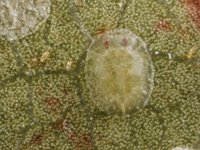WHITEFLIES
BEMISIA WEBSITE CLICK HERE
Photos by: Zdenek Landa and Lance S. Osborne
|
ADULTS
SILVERLEAF WHITEFLY
or SWEETPOTATO WHITEFLY
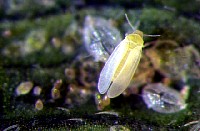 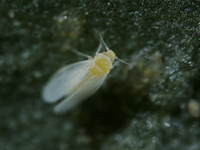
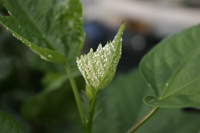 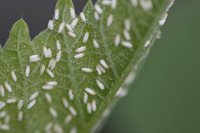
GREENHOUSE WHITEFLY
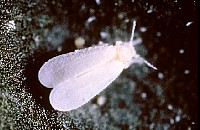
PAPAYA WHITEFLY
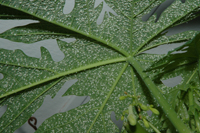
GIANT WHITEFLY |
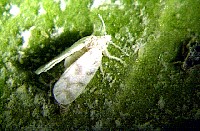 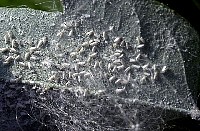
|
FICUS WHITEFLY
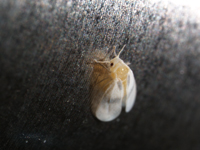
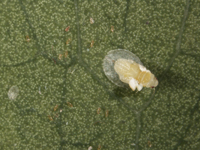 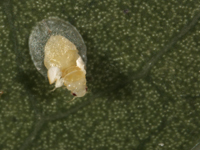
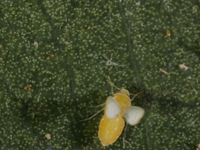
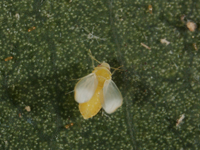 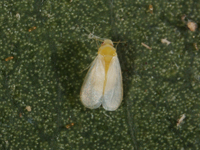
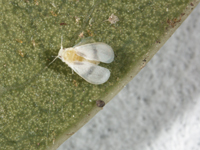
NATURAL ENEMIES MANAGING THE INVASION OF THE FIG WHITEFLY,
SINGHIELLA SIMPLEX (HEMIPTERA: ALEYRODIDAE),
INFESTING A
FICUS
BENJAMINA HEDGE.
Write lsosborn@ufl.edu for a copy of the publicaion listed above.
|
EGGS
SILVERLEAF WHITEFLY
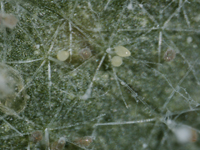 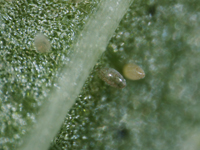 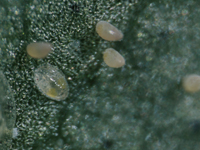
GREENHOUSE WHITEFLY

GIANT WHITEFLY
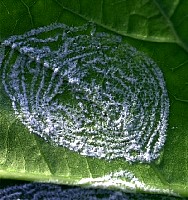
|
| |
SCALES
SILVERLEAF WHITEFLY
CRAWLERS
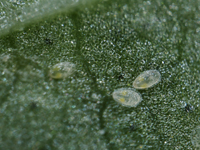 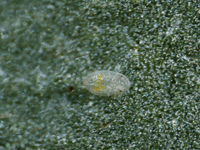
1ST THRU FOURTH INSTARS
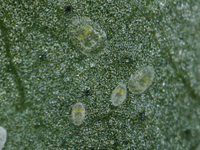 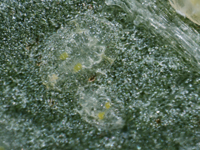 
 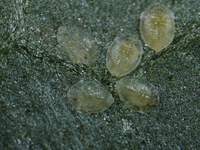
LATE FOURTH INSTARS
NOTE: EYES AND DEVELOPING WING PADS OF THE ADULTS
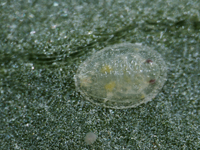 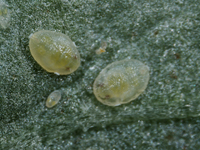 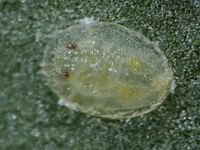
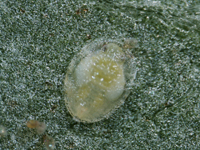 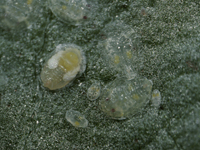 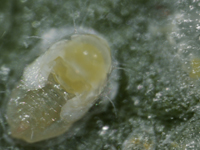
SCALES FROM WHICH ADULTS HAVE EMERGED
(White scales with T-shaped tear in cutical)
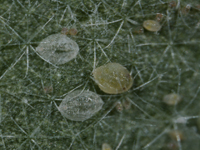 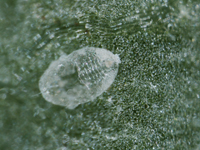
GREENHOUSE WHITEFLY
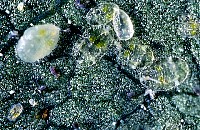
DAMAGE FROM SILVERLEAF WHITEFLY SCALES
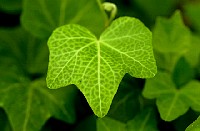
Damage to ivy from scales feeding on older leaves below
this leaf on the same stem.
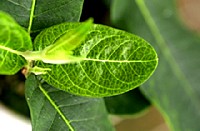
Damage to Mandevilla from scales feeding on older leaves
below this leaf on the same stem. |
| |
PAPAYA WHITEFLY
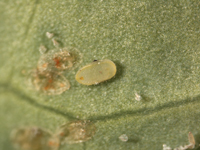
GIANT WHITEFLY
 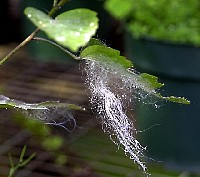
The immature stages or scales of this whitefly make a waxy
material that hangs from the infested leaves. This material is often
called a "beard" and can be as long as 6 inches. |
|
| The greenhouse whitefly is an important and most persistent pest of many
ornamentals, particularly poinsettia, as well as bedding plants such as
ageratum, fuchsia and salvia. However, this pest is of only occasional
importance on tropical foliage plants, unless they are grown in accompaniment
with a major whitefly host. Adults are white and are the most easily detected
stage as they fly when disturbed, quickly settling again on lower leaf surfaces
of the newly expanded foliage. Infestations can begin by introduction of
infested plants or migration of adults from other crops or weed hosts either
inside or outside of the greenhouse. Once again, the growth of sooty molds will
accompany and follow an infestation. Seriously affected foliage becomes
chlorotic and wilted. |
NATURAL ENEMIES
 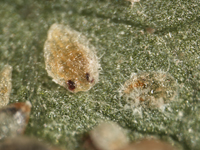
This fourth instar scale shows typical signs of being killed by either a parasitoid by host feeding or from being infected by an insect pathogen such as Isaria fumosorosea.
Adults infected with Isaria fumosorosea (PFR-97)
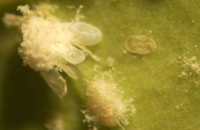 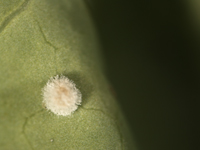 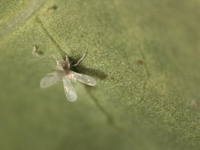
Adults infected with Ashersonia sp.
 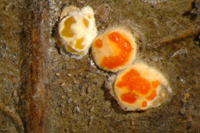 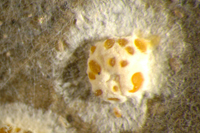
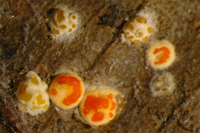
Adults infected with Beauveria bassiana.
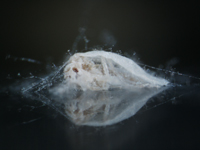  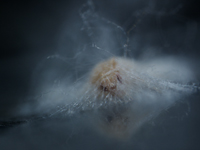
 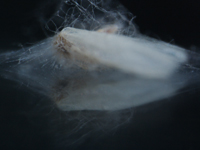
SILVERLEAF WHITEFLY
Encarsia sophia (transvena)
Black scales are whiteflies with the parasitoid pupae in side.
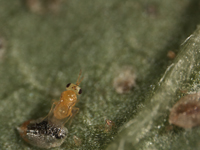 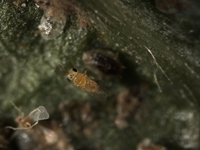
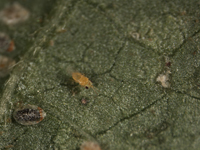 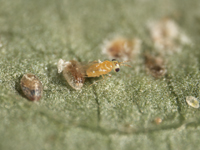
Encarsia sophia (transvena)
The two photos below show the larval stages within the parasitized scales which will first turn brown then black as the parasitoid larvae become pupae.
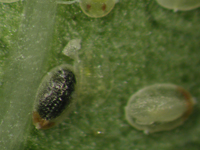
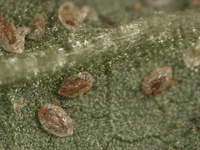 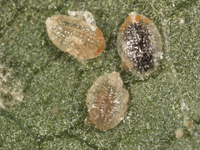 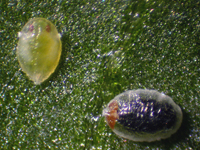 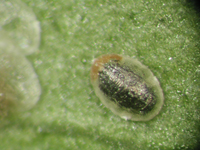
The two photos the emergence holes that the adult parasitoid makes in the old whitefly "skin" in order to emerge.
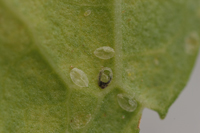 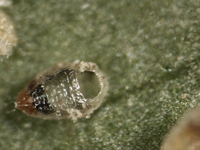
PAPAYA WHITEFLY
Encarsia sophia (transvena)
Black scales are whiteflies with the parasitoid pupae in side.
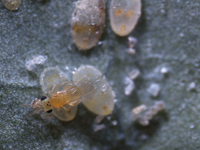 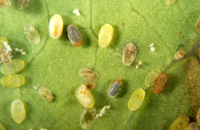
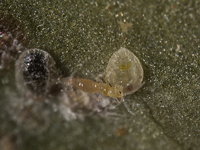
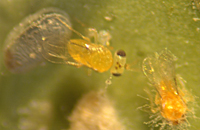 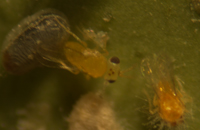 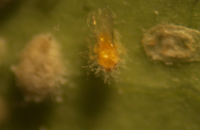
Delphastus sp. feeding on Papaya whitefly.
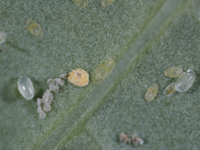
EGGS
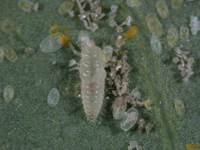 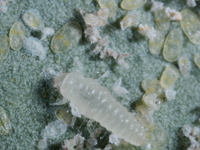
LARVAE
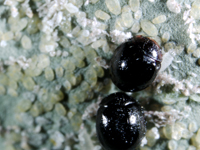
ADULTS
Nephaspis oculatus is a predator found in association with the Rugose spiraling whitefly in South Florida.
In these pictures, N. oculatus is feeding on Papaya whitefly.
LARVAE
 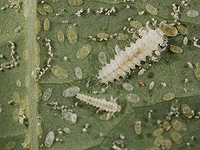 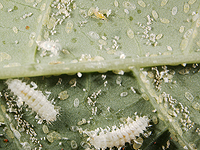
PUPA

ADULTS
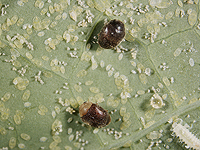  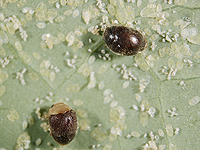
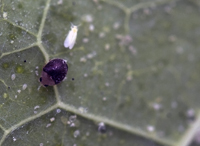
PAPERS (click on title to view a PDF file)
Establishment of papaya banker plant system for parasitoid, Encarsia sophia
(Hymenoptera: Aphilidae) against Bemisia tabaci (Hemiptera: Aleyrodidae)
in greenhouse tomato production.
Write lsosborn@ufl.edu for a copy of the publicaion listed above.
BANKER PLANTS
(UNDER CONSTRUCTION)
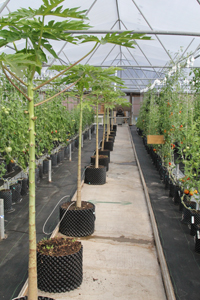 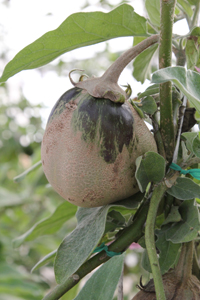
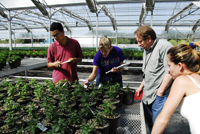 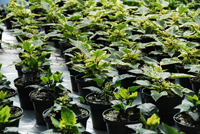 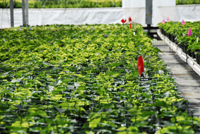 
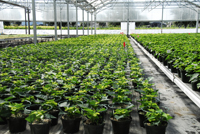 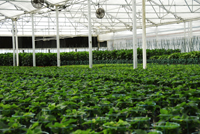 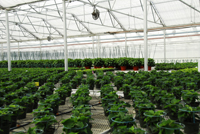
Copyright © 2000 [University of Florida, MREC]. All rights reserved.
Revised:
March 28, 2016.
|





















